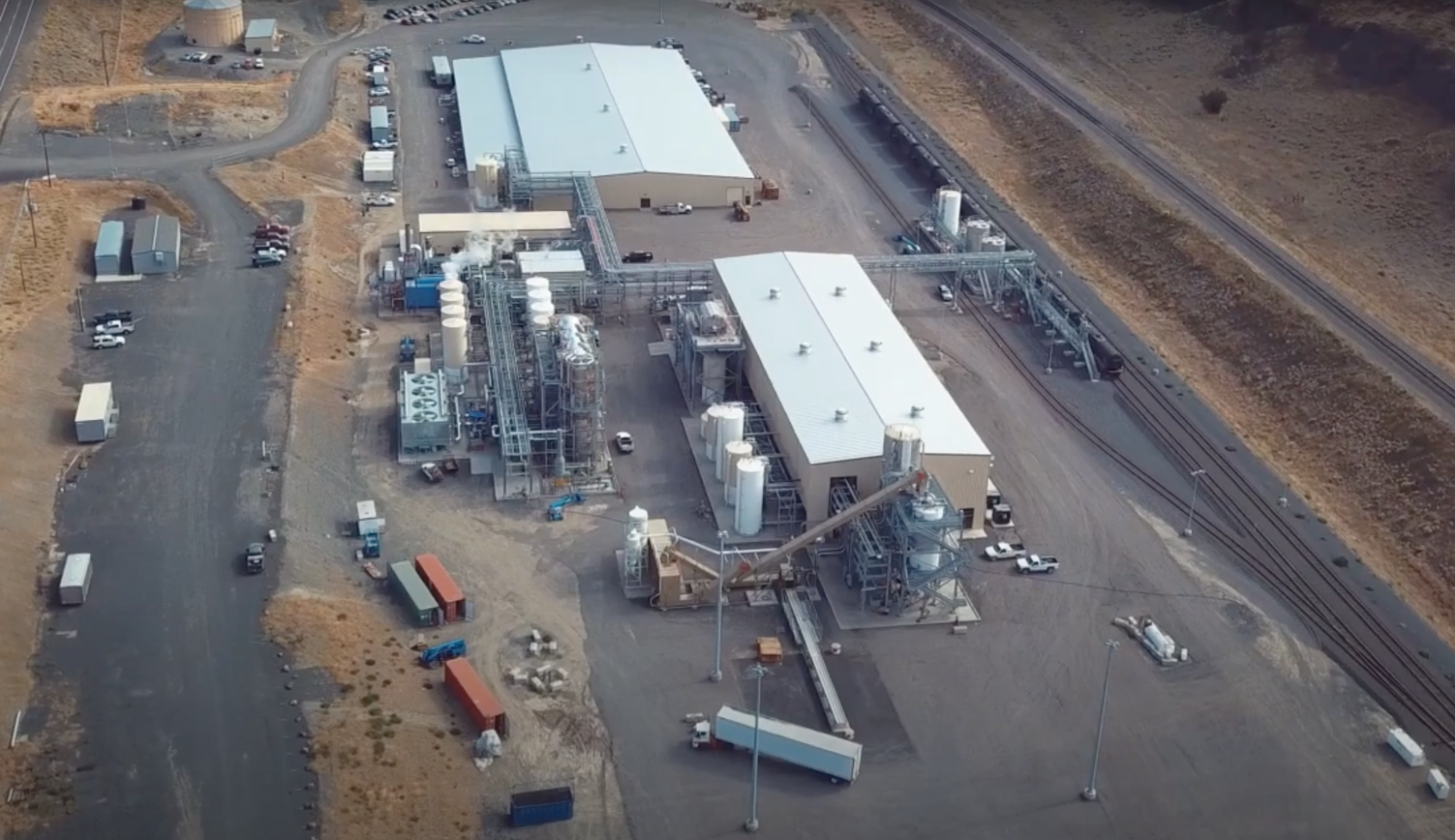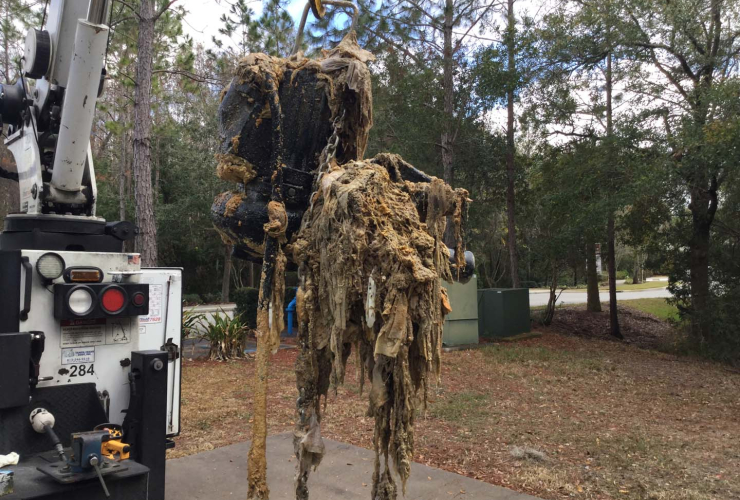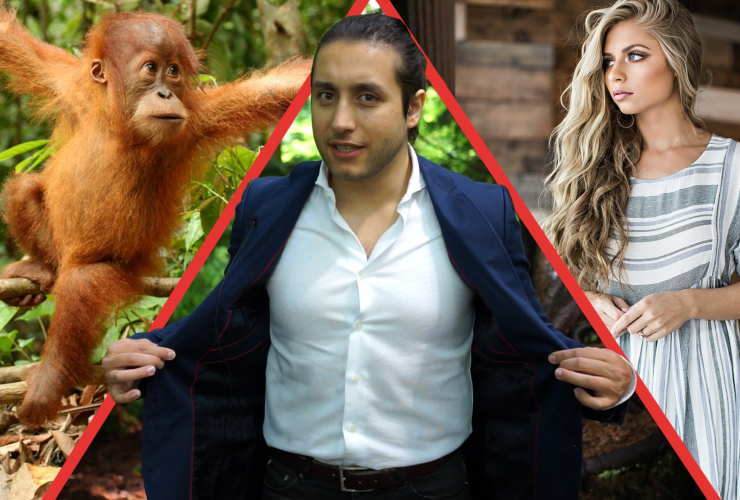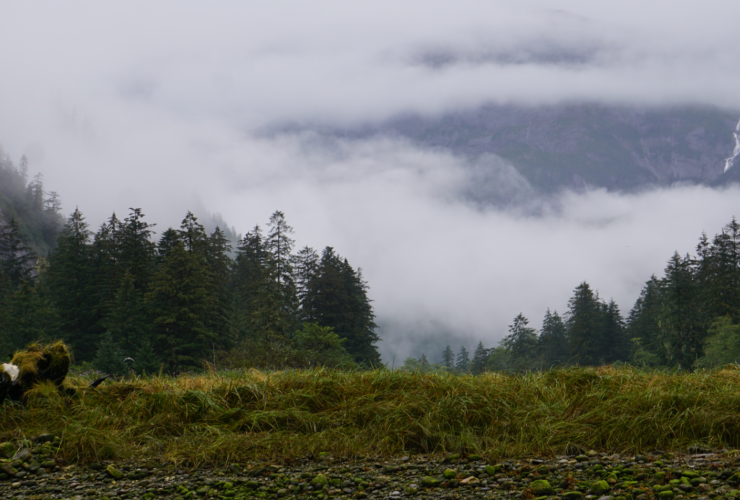For Nicole Rycroft, the first modern, tree-free commercial-scale pulp mill in North America was a “lightbulb moment” about the climate crisis.
The new mill in eastern Washington state, called Columbia Pulp, runs entirely without woodchips.
Instead, it makes pulp, for paper products like tissues and food containers, out of some of the hundreds of millions of tonnes of wheat straw that is left over after farmers harvest their grain.
Rycroft, as the founder and executive director of Vancouver non-profit Canopy, has been advocating for new technologies that take advantage of agricultural residues, food waste or old clothing, and turns them into everyday products, without the need for trees.
Her pitch is straightforward: climate scientists say conserving the world’s forests is key to slowing climate change, yet three billion trees per year currently go into paper packaging and another 200 million into clothing.
Meanwhile, there are tonnes of alternative fibre sources destined for landfills or the burn pile that can be made useful again, even accounting for some left over to ensure the organic integrity of the soil.
But convincing investors hasn’t been easy. For one, there is a lack of awareness of these technologies, said Rycroft. There is also a reluctance to jump into something that’s seen as new and risky.
Mills need large, upfront capital investments, while many investors are used to the high-tech world, where they can come in with smaller amounts and enjoy quick turnarounds.
For Columbia Pulp, the company had engineering plans, marketing and permits in place. But “it took them four years to find their equity,” said Rycroft.
That means knocking on hundreds of doors before being able to access the debt package needed to move forward on construction, she said.
Rycroft realized the same drawn-out process couldn’t be repeated for all the other promising technologies, one by one.
“We’re in this turnaround decade for our planet. We need to keep carbon out of the atmosphere and keep forests standing,” she said.
“So bringing on these alternative solution technologies that help alleviate the stress on forest ecosystems — we can’t wait another four years.”

Rycroft will be able to pursue this vision further as one recipient of this year's Climate Breakthrough Award, a three-year, US$3-million grant and support package from the Climate Breakthrough Project.
The award is meant to give winners the resources, time and space to put in place new strategies to deal with climate change.
Rycroft said her work and part of Canopy’s work over the next three years will be looking at ways to compress the four-year timeline she said Columbia Pulp experienced.
She believes the technological solutions are there, they just need to be scaled up and investment needs to be mobilized towards them.
“It’s a new green resource sector. There are a pipeline of innovators,” she said, in Australia, North America, Europe and China that have viable, low-carbon and low-water technologies to take advantage of alternative fibre. Canopy is working with about 25 of them at the moment, she said.
Canopy’s strategy document, unveiled January 2020, has done the math to reach its goal of eliminating 70 per cent of the pulp fibres that come from virgin forests and 30 per cent from plantations.
The strategy lays out where new infrastructure needs to be built in the coming years, like textile mills near large amounts of waste textile, or agricultural residue mills near where farmers end up with lots of wheat straw, for example.
The organization says there will need to be 200 new agricultural fibre pulp mills constructed at an estimated cost of US$40 billion — as well as 107 new recycled paper pulp mills, at US$21.4 billion, and 17 new recycled cotton or microbial-cellulose dissolving pulp mills, at US$3.4 billion.
These three technologies are then projected to combine with another US$4.2 billion to plant 7.5 million hectares of new trees on lands that are not currently prioritized for either food production, carbon storage or habitat restoration. The grand total would be a US$69-billion investment over a 10-year period.
Rycroft said getting over an initial hump of 15 to 20 new mills being built, and operating, will allow the movement to get beyond the perception held by conservative-minded investors of alternative fibres being a new or risky undertaking. Then, she said, more of the conventional and institutional money might be able to be tapped.
“This concept that we’ve had about things being waste, and no longer of any use, is completely artificial,” she said.
“Those hundreds of millions of tonnes of old clothing, and straw — and even food waste — they come with a much lower carbon footprint ... and have excellent qualities for making the next generation of packaging, or next season’s clothing.”
Carl Meyer / Local Journalism Initiative / Canada’s National Observer
makes my day to read about
makes my day to read about the sane and possible turnaround. Please please let Biden's push for green recovery (surely this qualifies??) be a real thing.
This article is a little confusing about whether the award and plans and costs are for US or Canada
If US does it, will Canada (within the next 50 years?)
A lot of cropland devoted to
A lot of cropland devoted to corn and soybeans for cattle feed could be converted to fiber/biomass, but this would require a sustained effort to encourage vegan diets.
To suggest that wheat straw
To suggest that wheat straw can be removed from fields where the wheat is grown, is to ignore that fact that if the wheat straw is returned to the field where it was grown is also to return carbon and nutrients. Agriculture can sequester some carbon from the atmosphere but not effectively, if wheat and other crop residue is removed. Traditionally, wheat straw was returned directly to the soil or as soiled bedding in livestock manure. If straw, as well as grain is removed, from fields then a system of returning livestock manure and using cover crops and forage crops in rotation must be implemented. In the end, there should be a plan to for net carbon sequestration and nutrient retention on farm fields.
I feel this way about
I feel this way about concrete. Traditional concrete emits CO2. There are all these technologies for making concrete that is actually in a small way a CO2 sink instead, but as far as I know the vast majority of concrete manufactured is still the bad kind. We need to accelerate that switchover (not least because then bashers would have to shut up about the CO2 from the concrete to build windmills).
The Canopy plan outlined does
The Canopy plan outlined does not include the social costs of realigning the supply chain from forest product to crop waste, i.e. the closing down of one-mill towns in say, BC and re-building the mills and communities in Alberta, Saskatchewan and Manitoba. Also, as pointed out above, it does not account for the soil-depletion effects of removing crop wastes. Removing the wastes would cut right across sustainable agricultures plans for non-tillage, soil restoration agriculture in the Prairie Region. It's complicated, eh?
In the final analysis, we should opt for both a reduced standard of living and a one-child policy until total human demand falls into line with what the world ecology can sustain.
Problem being that some of
Problem being that some of the proposed "solutions" might be great at the front end, but at the end, there are problems.
You can't use "sustainable" wood for building and still have the trees it came from breathing CO2 and exhaling oxygen.
You can't use everything of "the plant," and have something left to put back in the soil.
There are probably applications and regions in which one would be an interim improvement till an actually sustainable solution were reached, but solutions are only rarely the knee-jerk obvious.
Animal manure is largely recaptured to be fed back to its makers ... along with its meat by-products. Their body fluids when they're ultimately butchered are fed to the calves, since lactation and calving have in some milking breeds been bred out of sync with oe another.






Comments